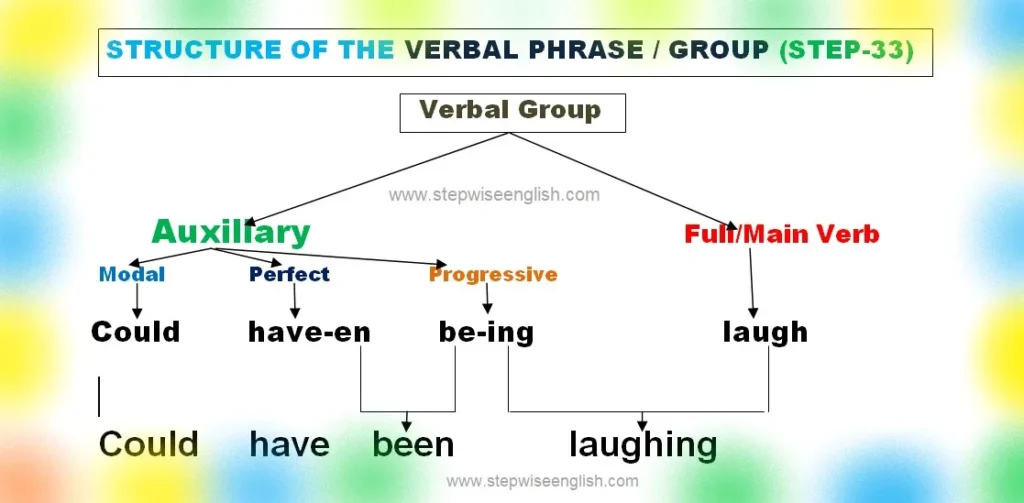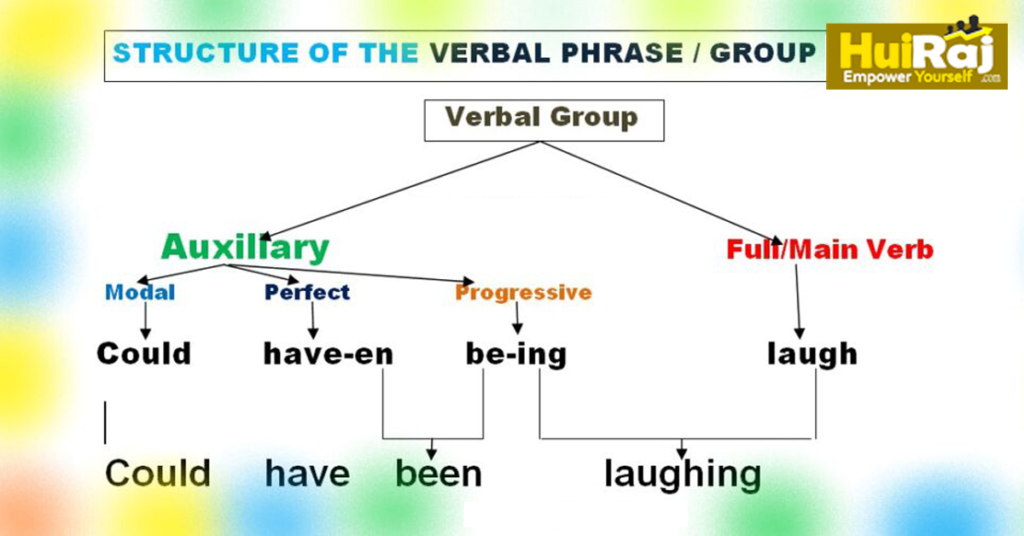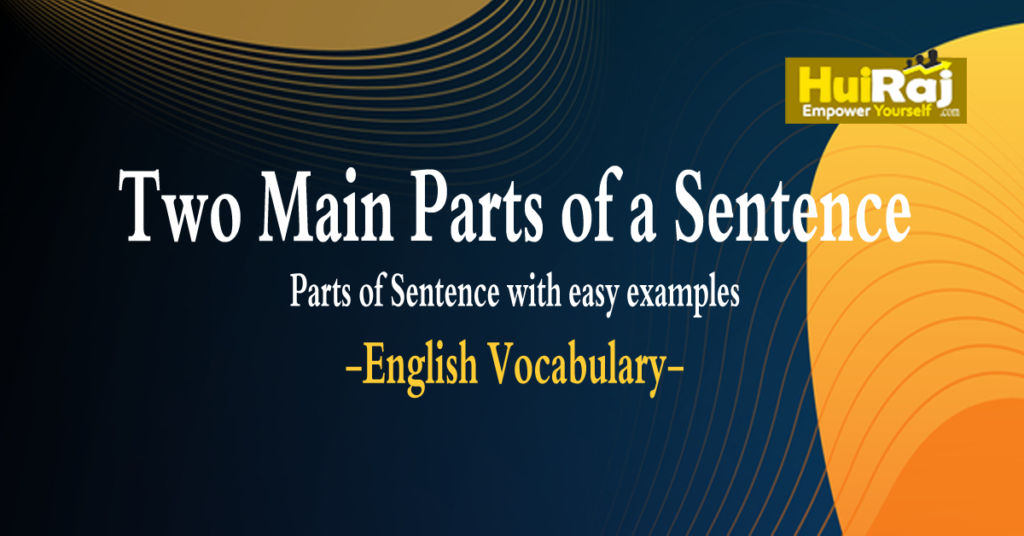What is the structure of the Verb Phrase or Group?
We have already learned that there can be more than one auxiliary verb present in a verbal group. So, it is necessary to learn the order of the auxiliaries in the verbal group or the structure of the Verb Phrase or Group. In short
Look at the following examples:
- Raghav must have arrived in Bhubaneswar by now.
- My father must have arrived house by now.
In the above sentences, 02 auxiliary verbs (must and have) are used. Mark their order/ structure in the verbal Group. We have seen that the first verb is ‘must’ in the verbal group and it carries the tense. If a modal is used in a sentence, it is always placed as the first element in the verbal group.
Look at the following examples:
- He may go.
- He may have gone.
Ins sentence 1, the modal ‘may’ is the only auxiliary. In sentence 2, there are two auxiliaries namely may and have.
Notice that the modal i.e may comes before the primary auxiliary i.e have.
Now again have a close look at the following sentences:
- It has rained.
- It is raining.
- He has been writing.
- It has been raining.
Above Sentence 1 shows the use of the “perfective” auxiliary “have“(Have-Has, Having, had). Similarly, sentence 2 shows the use of the “progressive” auxiliary be(is, am, are, was, were, be, being, been). Notice, in sentence 4, that the perfective auxiliary “have“(Has here) comes before the ‘progressive’ auxiliary ‘be’ (been here).
That means in a verbal group, the auxiliary can include MODAL, PERFECT, and PROGRESSIVE in that order.
Look at the following examples:
| SL. No. | subject | Modal | Perfect | Progressive | Other |
| 1 | He | could | have been | laughing | at us. |
| 2 | They | might | have been | playing | there. |
| 3 | the class | may | have been | going | on. |
Now, see the order of the auxiliaries in a verbal group in this chart.

Study the following sentences:
- She did his homework.
- She did not do his homework.
- We are students.
- We are studying English grammar.
- She has a house in the city.
- She has lived here all his life.
In the above examples (1), (3), and (5), ‘did’, ‘are’, and ‘has’ are full verbs as well as the predicating verbs. They carry TENSE. So they are FINITE. But in sentences (2), (4), and (6), the same verbs ‘did’, ‘are’, and ‘has’ are auxiliaries- first auxiliaries. They also carry TENSE here. They are FINITE. But the full verbs (do, studying, and lived) are known as the NON-FINITE. In a verbal group, the first auxiliary is finite as it carries the tense. All finite verbs agree with the subject.
| SL No. | Finite Verb Vs. Non-finite verbs |
| 1 | The finite form of a verb (full verb or auxiliary) shows time present or past or future; the non-finite form does not. |
| 2 | Every sentence must have the finite form of a verb in it. |
| 3 | If in a sentence, an auxiliary is fine, the full verb must be non-finite. |
| 4 | In a verbal group, the first verb is finite and the others are non-finite. |
Exercise-6
Underline the finite and bold the non-finite forms of verbs in the following sentences.
The first one has been done for you.
- The temple has been standing there for centuries.
- My brother must be waiting for me.
- Where did you buy that lovely toy?
- Have you ever ridden on a horse?
- He goes to bed early.
- Need we pay the bill this week?
- There is a leaf missing from this textbook.
- I used to receive letters from my sister every week.
- You ought to have gone there.
- You should live within your income.
- Who built the Jagannath temple?
- Don’t tell a lie.
Exercise-7
Now let’s play a game:
A. She may write the book = (Modal construction)= Modal + verb
B. She has written the book = (Perfective construction) = have + verb + en
C. She is writing the book= (Progressive construction) = be + verb + ing
D. The book is written=(Passive construction) = be + Verb + en
Each of the above sentences has a two-word predicating verb- one auxiliary and one full verb. In two constructions auxiliary “BE” has been used. What are they? In two constructions past participle forms(-en form) of the full verbs are used. What are they? Why does the last sentence start with “The Book”?
Now combine any two of these constructions so as to get AB, AC, BC, AD, BD, CD. Remember, when you combine D, use “The book” as the subject. Otherwise, use “She”. Note you can only combine A>B>C>D. It indicates you can combine BC, not CB. Similarly AD, not DA. Did you write your sentences as given below? Only the predicating verbs have been given here.
- AB = may have written
- AC = may be writing
- BC = has been writing
- AD = may be written
- BD = has been written
- CD = is being written
Now, write ABC and ABD.
If you have written “She may have been writing…” and “The book may have been written,” you are correct. Now, can you say why ACD and BCD combinations are not acceptable? To have more practice, take another verb and in a small group of your friends try to frame twelve sentences as given above –A to ABD. The teacher will ask you to write your sentences on the blackboard. The class will decide whether you are correct.


